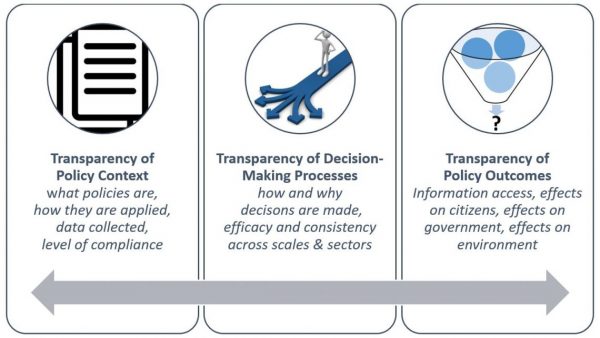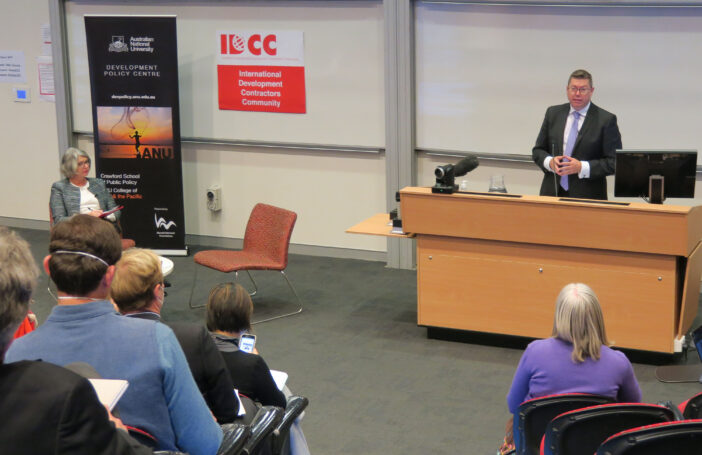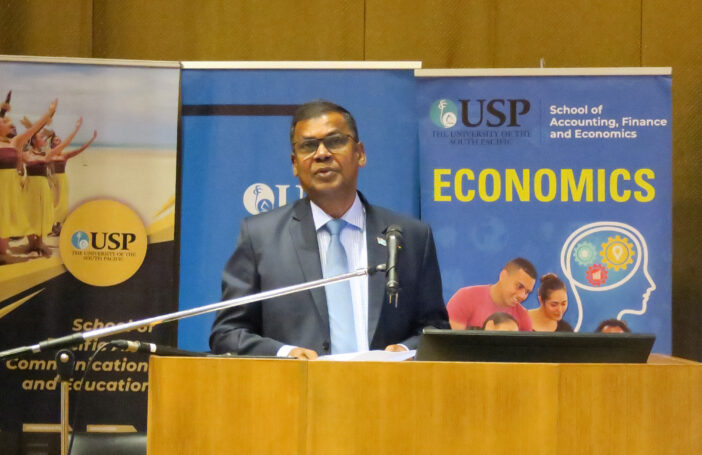Illegal, unreported and unregulated (IUU) fishing is one of the greatest threats to the world’s marine ecosystems. IUU activities, including misreporting catches and stealing fish, undermine accurate stock assessments, and threaten the long-term sustainability of the fisheries industry. Often facilitated by crime and corruption, each year IUU fishing drains the oceans of up to 26 million tonnes of fish worth US$23 billion. The revenue hit to the tuna rich fishing nations in our region is significant and one Pacific nations can ill afford as they struggle to meet their development needs.
NGOs, multilateral organisations, donors, and governments, argue that greater transparency (along with other measures) can help address these shady practices. Indeed, many believe that transparency is critical for ensuring that, for example, catches are accurately reported and licence fees are properly calculated. However, with some notable exceptions (for example, Wiser 2001, Clark et al., 2015 [paywalled]), there has been relatively little research on whether transparency efforts are making much of a splash in the fisheries industry.
Framing the transparency problem
To address this gap, we draw on an academic framework for understanding transparency efforts and apply it to the fisheries industry. Expanding on insights from Heald (2006), a handful of scholars (Grimmelikhuijsen and Welch, 2012; Cucciniello et al., 2017 [paywalled]) have identified three important components of transparency that can help with understanding the effectiveness of the processes and outcomes associated with transparency efforts (see Figure 1).
Figure 1: Three key components of transparency Adapted from Heald (2006), Cucciniello et al. (2017), and Grimmelikhuijsen and Welch (2012)
Adapted from Heald (2006), Cucciniello et al. (2017), and Grimmelikhuijsen and Welch (2012)
First, these authors examine the transparency of the policy context; that is, the information disclosed about what the policies are, how they solve a problem, how government implements policy, and implications for key stakeholders. Second, they focus on the transparency of decision-making processes, which refers to the degree of openness about how and why decisions are made (that is, the rationale that guides decision-making).
Finally, they focus on the transparency of policy outcomes, which relates to access to and the timeliness of information about the effects of policies. Cucciniello and colleagues (2017) use two broad classifications for outcomes of transparency initiatives: 1. effects on citizens (legitimacy, participation, trust in government, satisfaction); and 2. effects on government (such as accountability, corruption, performance, decision-making processes, financial management, and collaboration between governments). Given our focus on the fisheries sector, to this we add a third: effects on the environment (including environmental sustainability, fish stocks, and ecosystem integrity).
So what have we learnt?
The framework provides a holistic approach for understanding transparency and is simple enough for policymakers to use to assess the effectiveness of transparency efforts in the fisheries industry. However, a review of the fisheries literature reveals that policymakers often draw on some elements of this framework while ignoring others. For example, in their examination of the European Commission’s review of the 2002 Reform of the Common Fisheries Policy, Gray and Hatchard (2003) find that the Commission used the term ‘transparency’ to refer to the publication of decisions; however, it failed to explain why and how these decisions were made. In other words, the Commission promoted the transparency of the policy context over the transparency of decision-making processes.
The literature also suggests policymakers often overlook the policy outcomes associated with transparency efforts – oftentimes just getting the policy in place is good enough. Clark and colleagues (2015) evaluate 11 regional fisheries management organisations on how well they provide access to up-to-date and accurate information, involve the public in decision-making and ensure access to information about policy outcomes. They note that transparency around outcomes – including those concerning citizens, government, and the environment – was rarely available. This speaks to a broader shortcoming of fisheries policy: it can fail to rigorously evaluate stakeholder access to information, and the effects of policies on diverse groups.
In addition, policymakers tend to ignore the complex interplay of impacts and outcomes across multiple jurisdictions. For example, Gilman and Kingma (2013, paywalled) highlight the difficulties of translating transparency reform between regional and national scales in the fisheries industry. This issue is evident in Pacific island countries, where translating regional fisheries management decisions into national policies is often challenging.
A paucity of research exacerbates these challenges. Indeed, the lack of research on how transparency efforts impact different jurisdictional scales presents a significant gap in fisheries scholarship because, as Chakalall and colleagues (2007, paywalled) point out, fisheries resources are, by their nature, transboundary and multi-scalar. They note that:
Living marine resource governance needs [to] occur at different scales and also at multiple scales. The governance arrangements must be scale-conscious and scale-appropriate in order to account for human scale and diversity issues. These include differences among countries and stakeholder categories that affect the capacity to participate effectively, such as level of development, political systems, culture and geographic location. Many of these differences are size-related and inter-related in complex ways (2007: 93–94).
This suggests that any effort to apply the three-pronged framework presented in this blog needs to account for the multi-scalar nature of policymaking, and the contexts that determine governance mechanisms in the fisheries industry – a topic we are currently investigating in relation to Pacific island fisheries (the topic of a future blog).
Fishing for the future
As we have argued, applying this three-pronged framework could help policymakers better respond to the challenges associated with improving transparency in the fisheries industry. Researchers and scholars could further aid policymakers understand these challenges in two key ways.
First, by conducting further research on the ways the three elements of transparency manifest in different geographic locations and sectors of the fisheries industry. In particular, our research highlights the importance of monitoring the outcomes of policy efforts on citizens, government, and the environment.
Second, analyses need to consider how transparency policies are being put into practice, who has access to the information generated, and how it is being acted upon. Policy without analysis, monitoring and reflection won’t yield results. In turn, more effort is needed to ensure research on transparency efforts reaches watchdog agencies and policymakers, and that they take action to improve the transparency of policies and practice in the fisheries industry.





